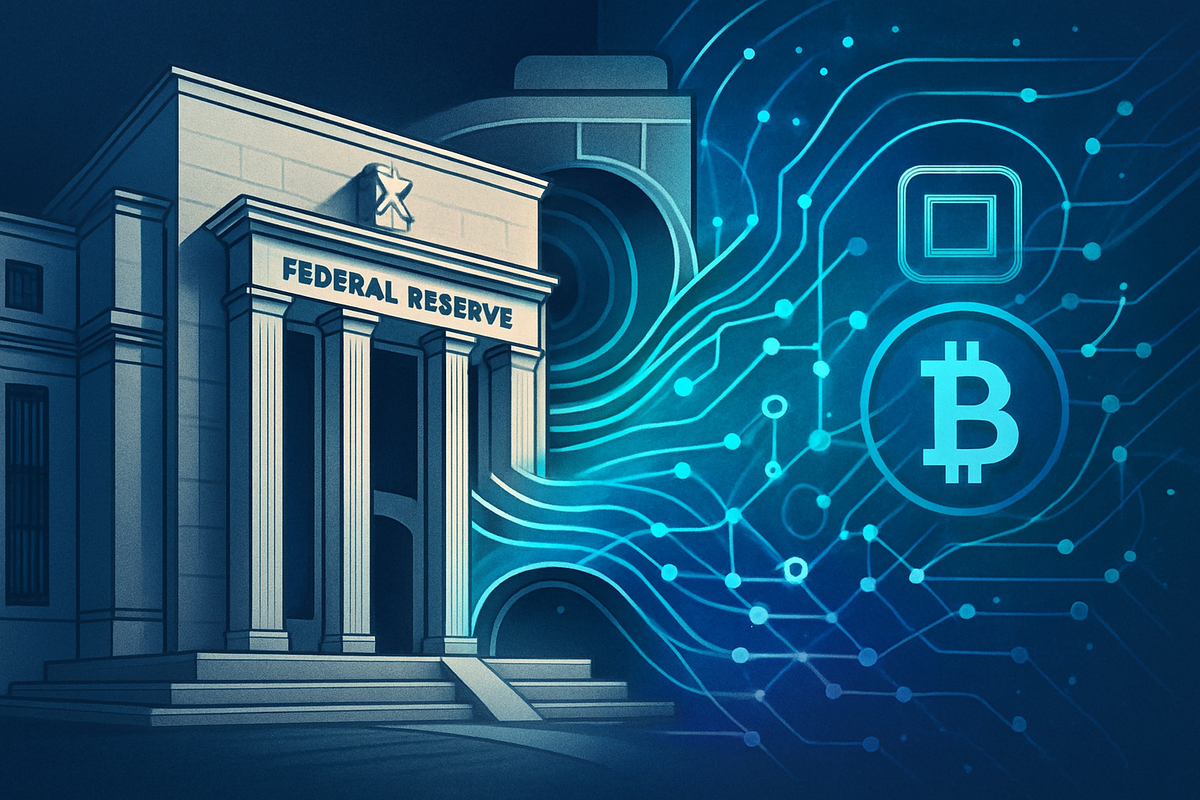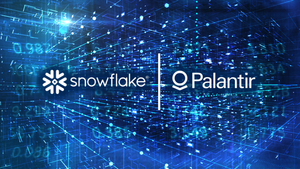
WASHINGTON D.C. – In a landmark development set to reshape the American financial landscape, Federal Reserve Governor Christopher Waller announced plans on October 21, 2025, to explore the creation of new "payment accounts," or "skinny master accounts," specifically designed for fintech and cryptocurrency companies. This initiative signals a significant shift in the Federal Reserve's approach, moving towards greater integration of novel financial institutions into the nation's core payment infrastructure. The move could dramatically de-risk operations for many crypto-native businesses and foster new forms of digital asset investment by providing direct access to the Fed's payment rails, bypassing traditional banking intermediaries for certain services.
This latest announcement builds upon the Federal Reserve's ongoing efforts to adapt to the rapidly evolving financial technology sector. While the Fed finalized guidelines for master account access in August 2022, which provided a tiered, risk-focused framework for various institutions including those with "novel charters," Governor Waller's new proposal offers a more tailored and potentially faster pathway for eligible fintech and crypto firms, particularly stablecoin issuers, to participate directly in the payment system. The implications are profound, promising to enhance innovation, reduce friction in digital asset transactions, and redefine the competitive dynamics within the financial services industry.
A New Era of Direct Access: Unpacking the Fed's Proposal
The Federal Reserve's journey toward accommodating novel financial entities has been a methodical one, culminating in this week's pivotal announcement. The initial discussions began as early as May 2021 with proposed guidelines for master account access, followed by supplemental proposals in March 2022. The formalization of these guidelines in August 2022 provided a foundational framework, establishing a clear, albeit rigorous, process for non-traditional institutions to apply for direct access to the Fed's payment services. However, the comprehensive nature of these guidelines meant that institutions engaged in novel activities, such as crypto and digital assets, faced an extensive review process.
The October 21, 2025, announcement by Governor Waller at the Payments Innovation Conference, hosted by the Federal Reserve Board, marks a distinct acceleration and refinement of this strategy. The concept of "skinny master accounts" is specifically tailored to address the unique operational models and risk profiles of fintech and crypto firms. These accounts would grant direct access to the Fed's payment rails without requiring an intermediary bank, a significant departure from the traditional model. Critically, these accounts would come with specific restrictions to manage risk: no interest paid on balances, balance caps, no intraday overdraft privileges (payments would be rejected if the account hits zero), and no access to the Fed's discount window for borrowing. This structured approach aims to balance innovation with the paramount need for financial stability.
Key players and stakeholders involved in this evolving dialogue include the Federal Reserve Board itself, individual Federal Reserve Banks, fintech innovators, cryptocurrency companies (especially stablecoin issuers), and traditional commercial banks. The initial reactions from the digital asset industry have been largely positive, viewing this as a legitimization of their role in the broader financial ecosystem and a crucial step towards reducing systemic risks associated with opaque intermediary relationships. Traditional banks, while acknowledging the need for innovation, will be closely watching the competitive implications of direct access for their non-bank rivals.
The Shifting Sands: Potential Winners and Losers
The Federal Reserve's move to create "skinny master accounts" is poised to create a distinct set of winners and losers across the financial industry, fundamentally altering competitive landscapes and operational strategies.
Potential Winners:
- Stablecoin Issuers: Companies like Tether (USDT), Circle (USDC), and other stablecoin providers stand to be major beneficiaries. Direct access to the Fed's payment rails would allow them to settle transactions without relying on commercial banks, potentially reducing costs, increasing efficiency, and mitigating counterparty risk. This could bolster confidence in stablecoins as a reliable medium of exchange.
- Fintech Companies: Innovative payment firms and fintech platforms that currently rely on partner banks for access to the payment system could gain significant independence. This might include companies like Stripe or Block (NYSE: SQ) (formerly Square), though their specific needs for direct Fed access would depend on their business models and regulatory classifications. Direct access could streamline their operations, reduce fees, and accelerate transaction processing.
- Cryptocurrency Exchanges and Custodians: While not directly receiving master accounts, the overall de-risking and legitimization of the crypto payments ecosystem could benefit exchanges like Coinbase Global (NASDAQ: COIN) and institutional custodians. Easier movement of money in and out of the digital asset space could attract more institutional investors and increase trading volumes.
- Consumers and Businesses using Digital Payments: Ultimately, the increased efficiency and reduced costs enabled by direct access could trickle down to end-users, resulting in faster, cheaper, and more reliable digital payment services.
Potential Losers (or those facing significant adaptation):
- Traditional Commercial Banks: While still central to the financial system, traditional banks could see some erosion of their intermediary role in payment processing, particularly for stablecoin and fintech transactions. This could impact fee revenue and deposit growth from these fast-growing sectors. Banks may need to pivot their strategies to focus on other value-added services or deepen their partnerships with fintech firms rather than solely acting as gatekeepers.
- Smaller Banks and Credit Unions: These institutions might face increased competition from agile fintech firms that can now access the payment system directly, potentially impacting their ability to compete on speed and cost for certain payment services.
- Payment Processors reliant on traditional banking rails: Companies whose business models are heavily predicated on the existing, multi-layered payment infrastructure might need to innovate rapidly to remain relevant as direct access becomes more prevalent for their clients.
Overall, the move is likely to spur greater innovation and competition, forcing all players to re-evaluate their positions and strategies in an increasingly interconnected and digital financial world.
Broader Implications: Reshaping the Financial Ecosystem
The Federal Reserve's exploration of "skinny master accounts" transcends a mere technical adjustment; it represents a profound strategic pivot that will have far-reaching implications for the entire financial ecosystem. This initiative fits squarely into broader industry trends emphasizing digitalization, real-time payments, and the growing convergence of traditional finance (TradFi) and decentralized finance (DeFi). The Fed's explicit invitation for the DeFi sector to be "welcome to the conversation" on the future of payments signals an acknowledgment that distributed ledgers, stablecoins, and tokenized assets are no longer fringe concepts but integral components of the evolving financial infrastructure.
The potential ripple effects on competitors and partners are substantial. For traditional banks, the move could accelerate their own digital transformation efforts, prompting them to invest more heavily in blockchain technologies, instant payment solutions, and API-driven services to maintain their competitive edge. Partnerships between banks and fintechs may evolve, shifting from a gatekeeper-client dynamic to more collaborative models focused on specialized services. For fintechs and crypto firms, direct access could foster a new wave of innovation, allowing them to build more robust and efficient products without the constraints of intermediary banking relationships. This could lead to a proliferation of new payment solutions, lending platforms, and investment vehicles built on faster, more transparent rails.
From a regulatory and policy perspective, this development is monumental. It signifies a proactive attempt by the primary U.S. financial regulator to integrate novel financial activities into the regulated system, rather than operating in a reactive or prohibitive manner. This could pave the way for clearer regulatory frameworks for stablecoins and other digital assets, potentially reducing the existing regulatory uncertainty that has hampered growth in some areas. The careful limitations placed on "skinny master accounts" (e.g., no interest, no overdrafts, no discount window access) demonstrate a thoughtful approach to managing systemic risk while fostering innovation. Historically, the introduction of new payment systems, such as the Automated Clearing House (ACH) network or the development of electronic funds transfers, has always led to significant shifts in financial services, and this move could be seen as the next logical step in that evolution, adapting the central bank's role to the digital age.
The Road Ahead: Navigating New Opportunities and Challenges
The Federal Reserve's initiative to offer "skinny master accounts" opens a new chapter for the financial industry, presenting both immediate opportunities and long-term challenges. In the short term, we can expect a flurry of activity from eligible fintech and crypto companies preparing their applications for direct access. The Federal Reserve will likely face a significant influx of requests, necessitating a streamlined and efficient review process. This period will be crucial for establishing precedents and clarifying the operational guidelines for these new accounts. Stablecoin issuers, in particular, will be keen to leverage this direct access to enhance the stability and efficiency of their offerings, potentially leading to increased adoption of dollar-pegged digital currencies for cross-border payments and other use cases.
Looking further ahead, the long-term possibilities are transformative. Direct access to the Fed could catalyze the development of entirely new financial products and services that are currently constrained by the limitations of the traditional banking system. We might see the emergence of more sophisticated tokenized assets, real-time settlement platforms for a wider array of transactions, and innovative lending models that leverage the speed and transparency of digital rails. This could also foster greater financial inclusion by reducing the cost and complexity of payments for underserved populations.
However, market opportunities will be accompanied by new challenges. The increased competition from non-bank entities could pressure traditional banks to accelerate their own digital strategies and find new areas of value creation. Regulatory bodies will need to continuously monitor the evolving landscape, ensuring that innovation does not outpace robust risk management and consumer protection measures. There will also be ongoing discussions about the precise scope and limitations of these "skinny accounts," and how they might evolve over time. Potential strategic pivots will be required across the board: fintechs will need to build the necessary compliance infrastructure to meet the Fed's stringent requirements, while banks will need to redefine their role in a more disintermediated payment ecosystem. Investors should watch for companies that successfully adapt to these changes, particularly those that can leverage direct access to build scalable, compliant, and highly efficient payment solutions.
A New Dawn for Digital Finance: Key Takeaways and Future Watchpoints
The Federal Reserve's decision to open a discussion on "skinny master accounts" for fintech and crypto firms marks a pivotal moment in the evolution of the U.S. financial system. The key takeaway is clear: the central bank is actively embracing the digital future of finance, seeking to integrate novel payment technologies while meticulously managing systemic risks. This initiative, building on the August 2022 master account guidelines, signals a proactive shift from cautious observation to deliberate integration, recognizing the growing importance of distributed ledgers, stablecoins, and tokenized assets.
Moving forward, the market is poised for significant transformation. We can anticipate enhanced efficiency and reduced costs in digital payments, particularly for stablecoin transactions. This could lead to a more competitive landscape, spurring innovation across both traditional and emerging financial sectors. For investors, the coming months will be critical for identifying companies that are best positioned to capitalize on these changes. Watch for fintech and crypto firms that demonstrate strong compliance frameworks and innovative use cases for direct Fed access. Similarly, monitor how traditional banks adapt their strategies, either through enhanced digital offerings or strategic partnerships, to remain competitive.
Ultimately, this development underscores a fundamental re-evaluation of how money moves and is managed in the digital age. The Federal Reserve's willingness to create tailored entry points for novel payment firms is not merely a technical adjustment; it's a strategic move to ensure the U.S. remains at the forefront of financial innovation while safeguarding the stability and integrity of its payment system. The lasting impact will likely be a more integrated, efficient, and resilient financial ecosystem, provided that careful oversight and continuous adaptation remain paramount.
This content is intended for informational purposes only and is not financial advice





